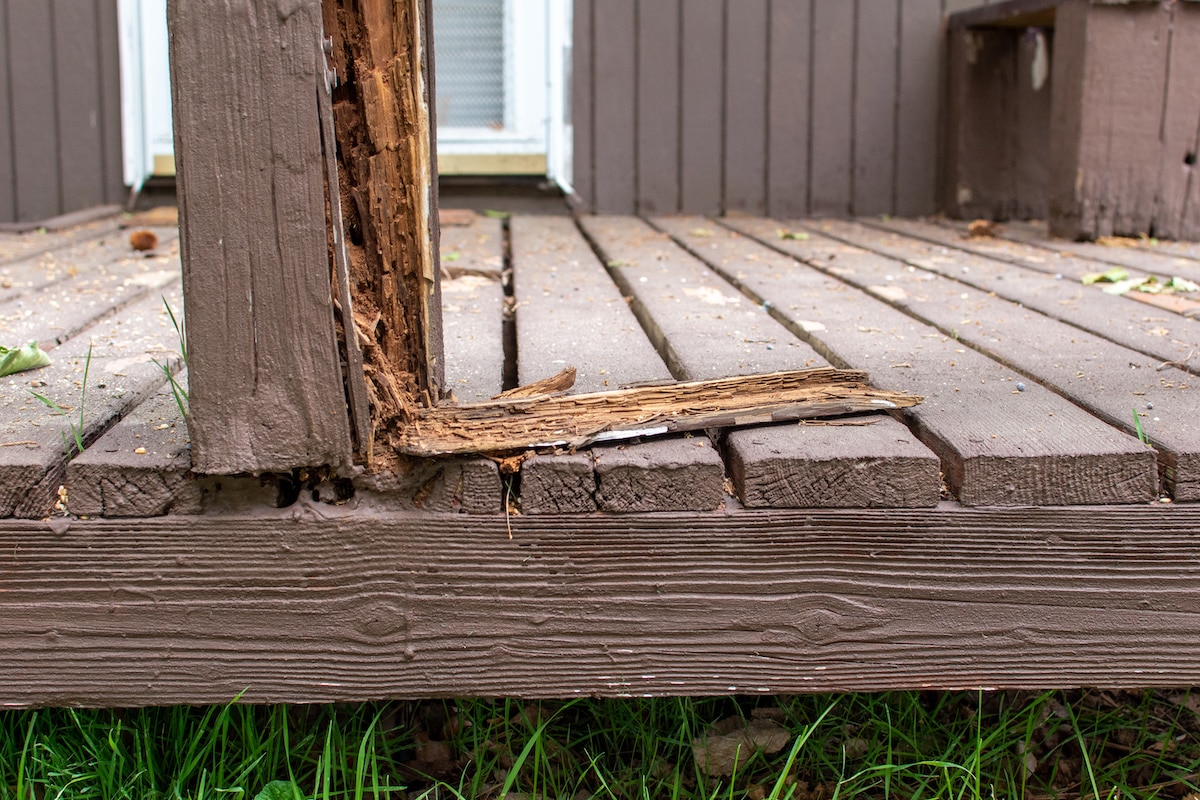A rotted deck can be a significant issue for homeowners, both in terms of safety and aesthetics. Over time, exposure to moisture, sunlight, and the elements can cause your deck to deteriorate, especially if it’s made of wood. Fortunately, repairing a rotted deck is often possible and can restore its integrity and functionality. Here’s a step-by-step guide on how to repair a rotted deck.
Step 1: Assess the Damage
Before starting repairs, thoroughly inspect the deck to identify the areas affected by rot. Rot usually starts on the surface and can extend into the deck boards or support structures if not addressed early. Here’s how to check for damage:
-
Surface Rot: Look for soft, spongy, or discolored areas on the deck boards.
-
Structural Rot: Check the joists, beams, and posts for signs of weakness or damage. If these areas are rotting, the deck’s structural integrity could be compromised, requiring more extensive repairs.
Step 2: Remove the Damaged Wood
Once you’ve identified the rotted sections, you’ll need to remove the damaged wood. Follow these steps:
-
Remove Deck Boards: If only a few boards are affected, use a pry bar or hammer to lift and remove the rotted boards. For more extensive rot, you may need to cut the boards using a saw.
-
Cut Out Rotted Joists or Beams: If the structural support is compromised, use a saw to cut out any rotted joists, beams, or posts. For deck posts, you may need to replace the entire post if it’s rotted near the base.
Be sure to wear safety gear (like gloves and goggles) when removing damaged wood to protect yourself from sharp edges and debris.
Step 3: Treat Exposed Areas
After removing the damaged wood, treat the exposed areas to prevent further rot. You can use a wood preservative or fungicide to protect the remaining wood from moisture and mold. Here’s what to do:
-
Wood Preservative: Apply a wood preservative or sealer to the exposed wood to prevent future rot. This helps protect the surrounding areas and extends the life of your deck.
-
Mold and Mildew Remover: If mold or mildew is present, use a mold remover to clean the area and ensure that the wood is safe from further contamination.
Step 4: Replace the Rotted Sections
Now that the rotted wood is removed and the exposed areas are treated, it’s time to replace the damaged sections. Here’s how to do it:
-
Replace Deck Boards: Use new deck boards to replace the rotted ones. Make sure the new boards are the same size and thickness as the old ones. If you’re using wood, ensure that it’s properly treated for outdoor use. Attach the new boards using screws or nails designed for outdoor use, ensuring they are securely fastened.
-
Replace Structural Components: If joists, beams, or posts were damaged, cut new structural pieces to match the original dimensions. Install the new components securely and ensure they align properly with the deck’s framework.
Step 5: Secure and Seal the Deck
After replacing the rotted areas, it’s crucial to secure the deck and protect it from further damage. Follow these final steps:
-
Secure the New Wood: Double-check all screws or nails to ensure the new boards and structural components are firmly in place.
-
Apply a Deck Sealer: Apply a high-quality sealer to the entire deck, including the new and existing wood. A good sealer will protect the deck from water damage, UV rays, and general wear. Make sure to re-seal the deck every 1-2 years for continued protection.
Step 6: Regular Maintenance to Prevent Future Rot
Once your deck is repaired, regular maintenance is key to preventing future rot. Here are some tips to keep your deck in top condition:
-
Clean Regularly: Sweep the deck regularly to remove debris, dirt, and moisture that can contribute to rot.
-
Seal Annually: Reseal the deck every year to keep moisture out and extend the lifespan of the wood.
-
Check for Damage: Inspect the deck at least once a year for signs of rot, mold, or mildew. Early detection can prevent larger issues down the road.
Conclusion
Repairing a rotted deck is entirely possible with the right tools and knowledge. By assessing the damage, removing rotted wood, treating exposed areas, replacing damaged sections, and sealing the deck, you can restore the structure and appearance of your deck. Regular maintenance and proper care will help keep your deck safe and durable for years to come.
If you’re unsure about the extent of the damage or need help with more extensive repairs, consider consulting a professional to ensure your deck is safe and well-maintained.
